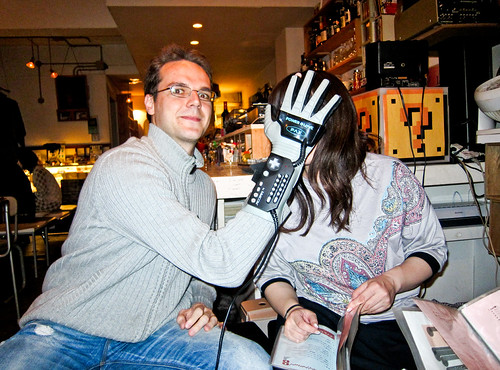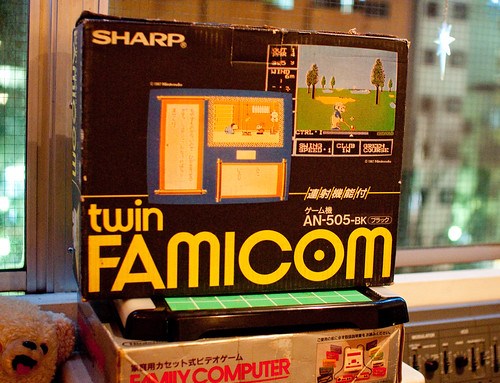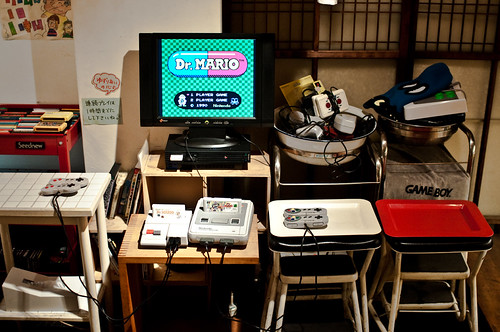The other day some colleagues and I got out of work early and went to recall the good old days to 8bit cafe, a very special cafeteria plenty of stuff related to 90’s video games.

Sign at the entrance to 8bit cafe.
Soon after entering the cafeteria we saw shelves plenty of video game consoles (mostly 8 and 16 bit consoles), accessories, video game boxes and tons of really cool stuff capable of evoking nostalgic feelings to a whole generation of gamers from the 90’s. We sat down around a table in the back part of the cafeteria and I started fooling around with a Power Glove that was next to us while we were enjoying the music from the first Zelda for the original Game Boy.


Testing the Power Glove.

Testing the Power Glove.


Our new revolutionary invention! I hope Steve Jobs doesn’t steal our idea 😉
The waitress came and gave us the menu. They had special cocktails with names such as “Doctor Mario” or “Princess Peach Temptation”.
Miwa and I decide to try the “Doctor Mario”, and this is what we got!:

These are the four pixelated coasters that we got. Cool!

The capsules part of our Dr. Mario cocktails.
I am not sure what were the cocktail ingredients but they were pretty good. And then the time arrived when we had to take the Dr. Mario capsules: Which one do you take, the red one or the blue one?
I took the red one, but it didn’t work! I will have to keep trying. To honor the cocktails and to make the most out of the capsules effects, we started our gaming session playing Dr. Mario.
There were approximately a hundred Famicom games and another hundred Super Famicom games available. There was also a varied selection of Sega Mega Drive, Sega Master System and PlayStation video games.

The next game we played was Final Fight 2.

Kawabe’s hands in action; he easily kicked our ass playing Puyo Puyo.

We also played some Mario Kart and Romancing Saga.

And also a couple of Dragon Ball Z battles.
After two intense hours we had to leave the gaming area so that other clients could play and we went back to our table. Next to every table there was a note pad, some color marker pens and some manga volumes that invited you to start drawing. It amazes me how many Japanese people can draw very well. I am pretty sure that the drawing ability of the average Japanese person is much higher than that of a person from any other country in the world.
I think that more attention is given to artistic education at young ages and I guess that being surrounded by manga all the time also helps people getting motivated to practice. My colleague Kawabe told us that during his college years he spent most of his free time drawing manga; however he told us that he never achieved the necessary level to do it professionally.

Kawabe’s drawing (after just two minutes).




Notice the lower shelf plenty of Game Center CX DVDs.


A Sharp 8bit video game console.

This is a USB mouse; the hat is the mouse button.

A Takahashi Meijin caricature in on of the cafeteria walls. He recommends you to play only one hour a day.

Shelves full of video game consoles and games from the last century.

They even had a Virtual Boy on display, but it was not available to play.
I had a great time at 8bit cafe. What games would you choose to recall the nostalgia from the good old days?














